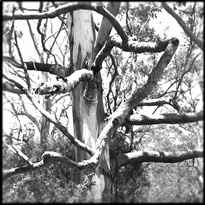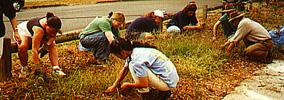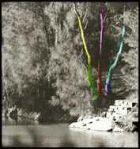The 3 R's Project
The "3 R's" Project stands for:
Ridgetops, Riverbanks and Roadsides
. Located in the Old Toongabbie region of Parramatta, the project sites are
part of Australia's earliest penal and agricultural settlement areas. For this
reason, the 3 R's projects seek to redress the negative impact of over 200
years of inappropriate European attitudes on the landscape by first promoting
re-valuation of rare remnant natural resources, and then by demonstrating in a
practical way the efficacy of community based urban landcare activities.
Objectives
The Project's Objectives are to:
-
Promote a conservation approach that demonstrates to land managers that
sustainable management is achievable.
-
Foster and develop an appreciation of local native vegetation and cultural
landscapes by the community.
-
Implement alternative land management techniques based on biodiversity and
habitat restoration and connectivity.
So far, WHaT Bushcare has achieved these objectives by:
-
Undertaking successful ecological restoration projects in strategic areas.
-
Choosing 'core' habitat areas to demonstrate the diversity in vegetation
communities and habitats in the area.
-
Demonstrating the phenomenal increase in biodiversity resulting from the
cessation of mowing in selected parks.
-
Educating the community of the habitat value of dead trees.
-
Demonstrating the value of traditional aboriginal use of fire to increase
landscape productivity.
-
Involvement of schools in on-ground projects.
-
Successfully connecting remnant areas with corridor links implemented on
private and public land.
Back to top of Page.

Grey Gum (Eucalyptus punctata). This species is rare in the Parramatta area. As well the particular local form of the species is called: variety "Wianamatica". It is indicative of transitional vegetation communities - those growing on
soils transitional from Sandstone to Shale. Unfortunately, many dozens of old-growth trees were destroyed at the Old Toongabbie Forest at the Grand United Friendly site.
Components of the "3 R's" Project
1. Community Involvement
Regular Community Activities
WHaT Bushcare has activities involving the community virtually every Saturday
and Sunday. Each activity is focused on a specific project and is advertised by
way of a
diary-newsletter
or by letter box drops. The varied activities and projects include:
-
streambank plantings;
-
nursery propagation days;
-
seed collection;
-
regeneration;
-
weeding and training days.
2. Planning & Implementation
Strategic planning
The projects have been specifically chosen to maximise their public
demonstration value as well as their inherent natural value. Sites have been
chosen for:
-
the high value of the remnant vegetation community - eg. rare River-Flat Forest
and Sydney Blue Gum Forest occurring in creek areas;
-
high visibility - closeness to major roads & bridges;
-
maximum effect - eg demonstrating spectacular regeneration and increase in
diversity of heavily mown sites;
-
their connective value - both along the creeks as well as connecting to the
rare ridge-top vegetation in the area.
3. Education & Communication Strategies
Newsletter
An on-line
newsletter
has been produced which describes:
-
a diary of activities;
-
project activities;
-
Information about the local plant species and historical influences;
-
bush regeneration training days.
For 2 years WHaT Bushcare has organised bush regeneration training courses at
greatly subsidised costs to the community.
Surveys 1997-98
For 2 years surveys of local residents were undertaken to assist the group to
plan new activities.
4. Innovation
Community art
Many of the projects have integrated an art component into the restoration
project. One project involved branding of dead trees adjoining Toongabbie Creek
by a local aboriginal artist. Another project has involved students from a
local school to use local plants in a landscape-sculptural artwork.
Demonstrating sustainability
One successful project has been at Baxter Healthcare - a large industrial site
that has a creek running through it. This project has demonstrated that:
-
money can be saved by converting a mown area to a diverse vegetation community;
-
biodiversity can be increased significantly on a previously sterile industrial
landscape;
-
industry can successfully participate in Rivercare and Landcare and incorporate
these values into its corporate culture.
5. Promotion of ideas
Web page
A Web site for WHaT Bushcare has been put up to complement the printed
newsletter and to promote the objectives of the group. The advantage of the
online newsletter is:
-
the site is available to anyone via a web search engine. ;
-
there is an element of interactivity via the use of links to other topics and
sites;
-
details about training days, contacts and projects can be updated and accessed
immediately.
Baxter Healthcare
A large commercial factory at Old Toongabbie was approached to undertake a
project within its grounds. This cooperation sought to demonstrate:
-
the importance of involving the corporate and commercial sector in landcare
activities;
-
the achievability of using private industrial land for connection of corridors.
Advertisements
The group regularly places advertisements in the local paper to promote the
projects.
6. Improved catchment practices
The WHaT Bushcare group has promoted in all its projects improved catchment
practices with the aim of contributing to clean, healthy and productive rivers.
Positive impact on the riverine environment
An example of this is the project at Baxter where a riverside mown parkland was
converted to a riparian River-Flat Forest with complex understorey.
Promoting natural remnant areas for infiltration & stormwater management
Due to the local problems of flooding the group has promoted the preservation
of natural remnant areas for maintaining natural hydrologies.
Vegetation conservation
Prior to the formal identification and classification of the riparian
vegetation as endangered ecological communities by NPWS the group initiated the
conservation and regeneration of these as priorities.

Water quality improvement
The group has practically implemented strategies for reducing overland flow in
reserves and adjoining roads, thereby reducing the impact of pollution and
siltation.
Instream works (erosion control)
The group has recently negotiated with the local University for a study of
measures to deal with serious erosion issues in Toongabbie Creek.
Habitat enhancement
Riparian habitat improvement has been implemented in a heavily modified creek
channel within an industrial site. The objective is to increase shelter and
enclosure for birds as well as providing shading for aquatic organisms.
Convict Farm Corridor
The Convict Farm Corridor project (1997 - present) initiated the repairing and recovery of the endangered River-Flat Forest vegetation remnants in the 3rd Settlement precinct also in need of management reconsiderations.
Engineering and political responses to flood waters in the late 1980's in the historic Toongabbie floodplain lead to short term reactions of clearing riverbanks and channelising streams at great environmental and financial cost with long term impacts. With the removal of vast amounts of native shrubs and trees (amongst exotic weeds such as Privet) by heavy machinery (presumably by mistake) went riverbank stability, soil erosion control for clean water and much wildlife habitat. Exposed and damaged trees have been found to suffer dieback and the hasty grading of one weed species has encouraged others.
The Rivercare project in Old Toongabbie forms its basis in total catchment management and the protection of many cultural and natural heritage values through good design philosophy.

|



